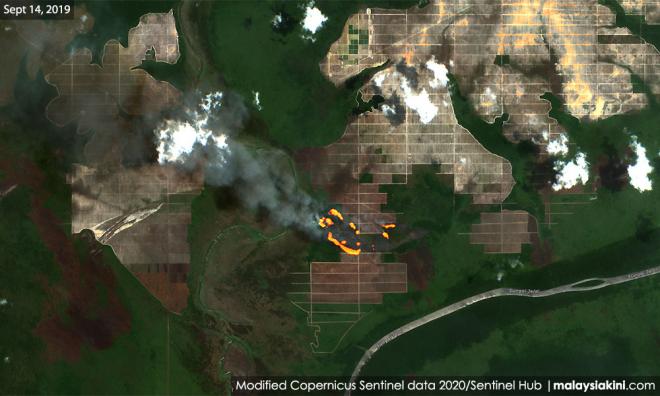
Each day, the Desa Jambi chapter of the group Masyarakat Peduli Api (MPA) has kept a watchful eye on the banks of Sungai Berais in West Kalimantan, Indonesia, for signs of wildfires.
The river is regarded as an area of high conservation value (HCV). Its winding waters cut across an oil palm concession operated by PT Kalimantan Prima Agro Mandiri (KPAM), dividing the concession land in two.
KPAM is owned by the IOI Corporation Bhd, which is headquartered in Putrajaya.
While out on patrol on his motorcycle, Desa Jambi MPA chief Romanus Soekarno, 37, received a call in September last year about a fire on the river’s east bank.
As the MPA moved in to respond, satellites high above have silently recorded a sequence of events that raise questions on IOI’s complicity in the blaze that would soon overwhelm Romanus’ team and threaten his family.
An investigation has found that at around the time of the fire, KPAM was clearing the area for new plantations.
Imagery from the Sentinel-2 earth observation satellites on Sept 4, 2019, showed tidy rectangular planting blocks appearing in the southern portion of the concession where there had been none just two months earlier. (See interactive image below)
At first, the new planting blocks were isolated from older blocks believed to have been planted in 2018.
This interactive image of satellite imagery of KPAM concessions in West Kalimantan shows new planting blocks appearing in September 2019. Drag the slider horizontally to compare the images.
On Sept 19, 2019, new imagery showed the space between the old and new blocks were engulfed in tell-tale signs of a raging fire (below, heat signatures highlighted orange).
On September 19, 2019, satellite imagery shows a fire has broken out on KPAM concessions between the old and new blocks. Drag the slider to compare the images.
Wildfire forensics expert Bambang Hero Saharjo, who regularly appears in Indonesian courts to testify as an expert witness against corporations accused of using fire to clear land, said hotspot analysis is one of the instruments that can be used to prove the source of a fire.
When hotspots first appear within boundaries of a concession, this fact is frequently used as evidence against the corporations.
“Usually when a hotspot appears in conjunction with land clearing activities by industry, this is irrefutable evidence,” Bambang said.

However, IOI denied its planting activities were to blame for the fire, saying that it adheres to a strict zero-burning policy and works with locals to help prevent fires.
It said there is also no scientific basis linking land clearing for new planting with the occurrence of fire or exacerbating the fires.
Instead, it pointed to a prolonged drought affecting the area, and the fact that locals have easy access to the HCV area at Sungai Berais.
“The area got affected by fire due to negligence of those who access the area for hunting, fishing and other activities. The fire incident happened due to the spread of fire from the HCV Management Area which is located alongside Sg Berais.
“HCV areas are protected and therefore there aren’t any roads built to access them. This becomes a challenge when fire incidents happen and water can’t be easily transported to the area,” IOI said in an email on Tuesday.
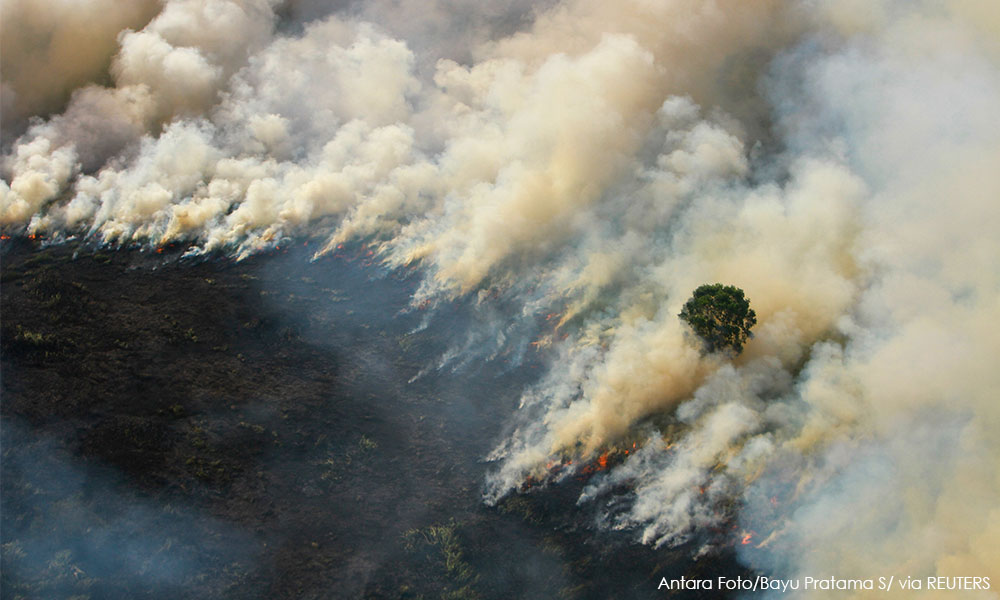
Difficulty breathing
Upon receiving a call of the fire last September, Romanus said every able MPA member had been scrambled to the HCV area to fend off the inferno.
“But the flames were more than 10 metres high. We could only resign ourselves to our fate,” he said when met in August this year.
The company workers, he added, were also mobilised from an office north for the fire.
Romanus’ wife, Maria Septiana, said she had to rent a speedboat for a 20-minute journey to rush the couple’s second daughter, who had breathing difficulties due to smoke inhalation, to the nearest doctor at the Sukamara sub-district.
“She could not speak,” Maria recalled.
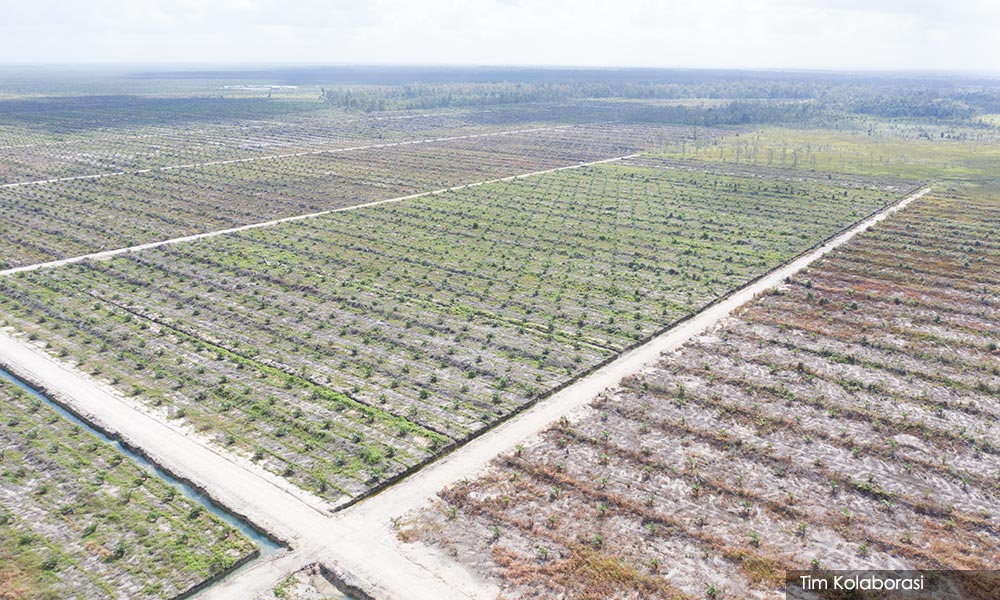
By August this year, almost a year after the blaze, the scene of the fire at the KPAM concession had been completely transformed.
Traces of the fire are gone, and the barren land has been turned into new planting blocks lined with young oil palm trees (above).
In other blocks, stakes have neatly planted on the ground to mark future planting blocks. Two trucks (below) fully loaded with oil palm sprouts were seen heading to the area.
Hundreds of concessions on fire
To date, no member of the Indonesian Directorate General of Environmental and Forestry Law Enforcement has agreed to an interview regarding this investigation, which also covers similar findings at other concessions that are Indonesian owned.
KPAM is only one of the hundreds of forestry and oil palm concessions affected by fire in Indonesia last year.
It is estimated that last year’s forest fires in Indonesia razed 1.65 million hectares of forests, involving at least 454 concessions and releasing the equivalent of 360 megatons of carbon dioxide between Aug 1 and Sept 18, 2019.
Some of the affected concessions are Malaysian owned, though not necessarily proven to be responsible for the fire.
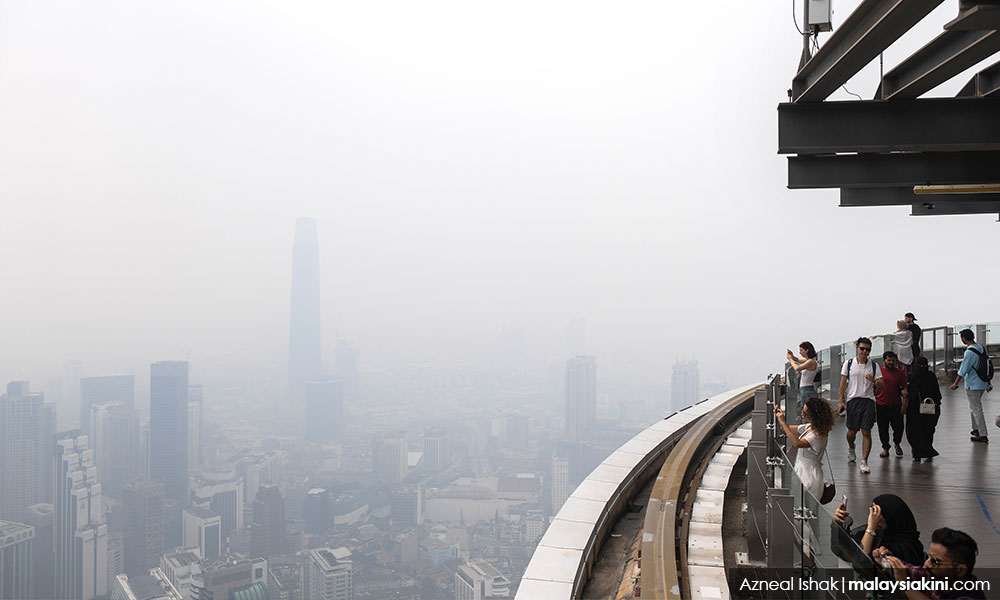
Kuala Lumpur was shrouded in haze in September 2019.
The fires led to severe haze in the Southeast Asia region, including Malaysia. East Malaysian states were worst hit due to proximity to Kalimantan, but the peninsula states, too, suffered poor air quality. In September 2019, more than 300 schools in Johor were closed due to the haze.
On Sept 19, 2019, the day satellite images captured a fire on KPAM concessions and the Air Pollutant Index (API) readings in six areas in Sarawak breached ‘very unhealthy’ levels.
Some 101 areas around Malaysia, recorded “unhealthy” air quality with API readings above 101.
Some 101 areas around Malaysia, recorded “unhealthy” air quality with API readings above 101.
The haze crisis in 2019 drove the drafting of legislation to punish Malaysian companies abroad found to have caused haze, but last month, Environment and Water Minister Tuan Ibrahim Tuan Man said the new government had scrapped the Harapan-era plans.
Tuan Ibrahim dismissed his predecessor’s solution to the haze problem as “cosmetic”, saying that evidence against the companies would be hard to procure.
Companies prosecuted in Indonesia
Companies prosecuted in Indonesia
Meanwhile, in Indonesia, environmental NGO Auriga Nusantara recorded at least 29 companies that are suspected to be the culprits of forest fires since 2015.
Of these, only 10 were prosecuted. Six were found guilty, two were acquitted, and two cases are still pending.
Aside from that, six cases were still being investigated, two cases were closed, and the fate of 11 other cases is unclear.
“It disappeared just like that,” Auriga communications director Syahrul Fitra said.
Activists in Indonesia have also raised concerns that draft legal reforms dubbed the “omnibus bill” would further undermine legal safeguards for the environment in the country.
This report is part of a joint effort between Malaysiakini and its partners in Indonesia - Tempo, Betahita, Mongabay, and environmental NGO Auriga Nusantara - with support from the Pulitzer Centre through the Rainforest Journalism Fund. Contributors are:
Person-in-charge: Wahyu Dhyatmika (Tempo)
Project leader: Agoeng Wijaya (Tempo)
Contributors: Agoeng Wijaya, Agung Sedayu, Ibrahim Arsyad, Aseanty Widaningsih Pahlevi, Aisha Shaidra (Tempo); Kennial Laia (Betahita); Lusia Arumingtyas, Budi Baskoro (Mongabay); Aidila Razak, Koh Jun Lin (Malaysiakini)
Multimedia team: Krisna Adhi Pradipta, Harfin Naqsyabandy, Harry Amijaya (Tempo)
Data analysis: Dedi Pratama Sukmara, Yustinus Seno, Sesil Maharani, Hafid Azi Darma (Auriga Nusantara); Agoeng Wijaya (Tempo); Koh Jun Lin (Malaysiakini)


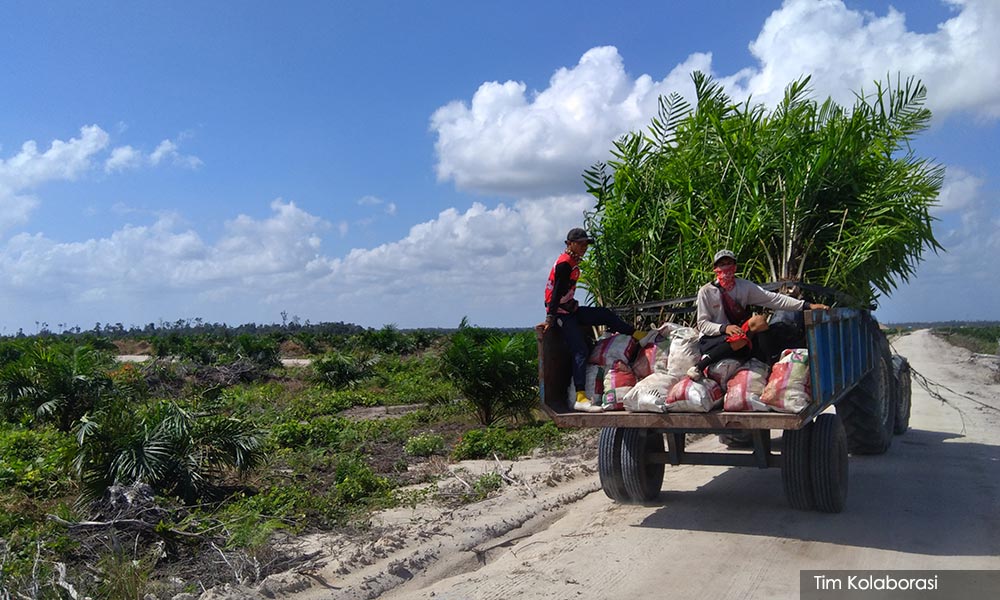
No comments:
Post a Comment
Note: Only a member of this blog may post a comment.